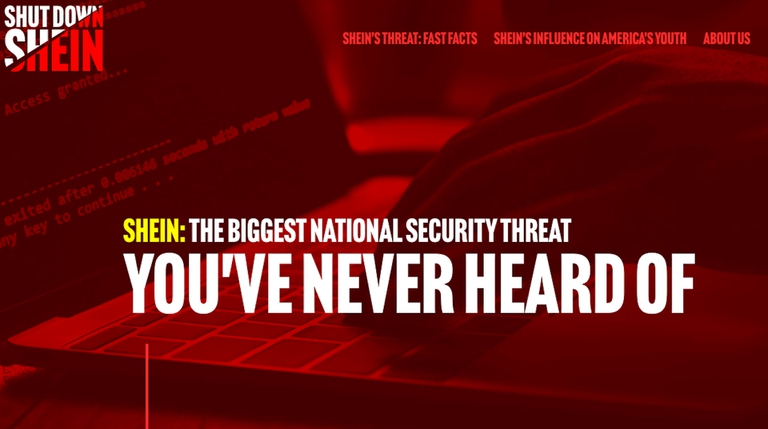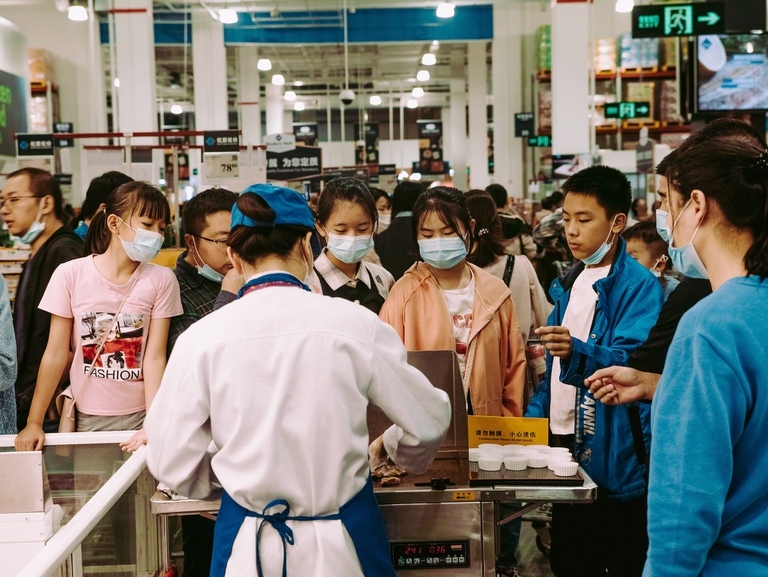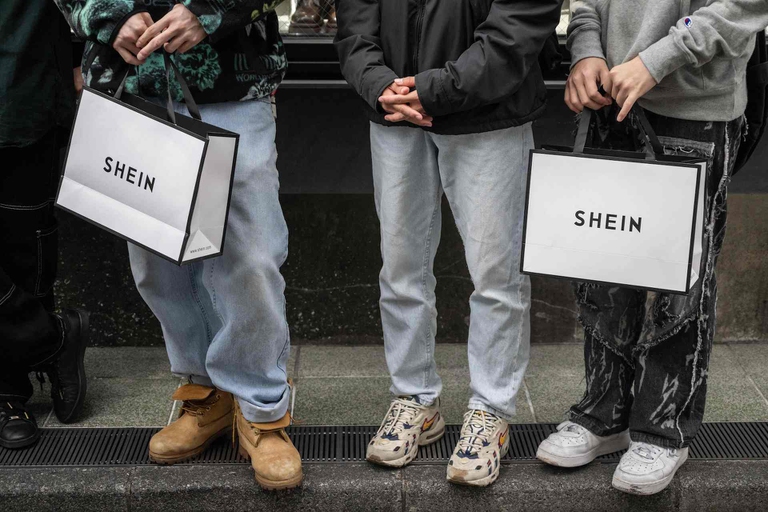https://www.lifegate.it/a-che-punto-siamo-fast-fashion-shein
- |
A new chapter opens in the saga Shein, and this time it involves the United States.Last October the world was left in shock following the Channel 4 denunciation documentary, which revealed the inhuman conditions where Shein employees are forced to work, Chinese ultra-fast fashion giant that bases its business on overproduction.The chilling revelations of the documentary “Untold:Inside the Shein machine” they were going 4 cents a piece received by workers up to salary deductions in the event of an error or failure towards the company.
What has happened since then?While Shein is trying with all his might to change the public perception of one's image through donations and initiatives of various kinds, an international coalition launched the campaign last March Shut down Shein.

The Channel 4 investigation and repositioning maneuvers
After the Channel 4 investigation, Shein returned the criticisms to the sender, ensuring that all collaborations that were not found to be compliant to the standards set byInternational Labor Organization and local regulations, but more than anything else she limited herself to keeping a rather strict confidentiality waiting for the hype on this matter to subside and trying to draw attention to something else.
The greatest efforts of rebranding of Shein for the moment they are concentrating in China and the United States, a gigantic market where the app for buying online is the most downloaded in the clothing sector and the fourth overall.In China he has declared his intention to establish himself 15 million dollars to be allocated to a significant improvement in the conditions of the factories to be implemented thanks to a Supplier community empowerment program (Scep), established for improve standards and bring physical improvements.Another 4 million dollars should be used for finance surprise inspections in the factories to check the conditions.Beyond the statement there is still no tangible verification that these initiatives have firstly been implemented and secondly produced results.The workers are not the only ones who have something to complain about Shein, which in the United States has often been involved in defending itself from several federal copyright infringement lawsuits.

And what was Shein's response to be regularly accused of copying other people's models?A mega summit in Los Angeles with hundreds of designers:an attempt to demonstrate that the brand is oriented towards working with them rather than stealing their creativity.Also the Shein X program fits into a context of repositioning with respect to exploitation of the intellectual property of others where Shein wants to take on the role of innovator and supporter of values such as diversity And inclusion.On the website we read that 3,000 designers benefited from the program, of which the 40 percent women, all encouraged to include in their creations some recycled fibres.
Fashion, inclusion and greenwashing a pound a pound, you might say.In Europe Shein is currently keeping a low profile and limiting itself to more pop and lighter positioning activities such as the sponsorship of one of the most famous pool parties of the summer season in Ibiza, theOr Beach Ibiza.In recent days, a high priority announcement appeared on Linkedin:Shein is looking for a figure for Italy to join the department Market branding.In short:it really seems like raising the bar of one's communication, until now predominantly entrusted to influencers who are little more than teenagers, is the next step of the Chinese giant.
Shut down Shein, the campaign from the United States
Among those who aren't buying the new story that Shein is telling about himself there is one international coalition which launched one last March global campaign with a rather evocative title: Shut Down Shein. Questionable business practices And violation of human rights are the main pillars around which the campaign is structured, which was created with the aim of informing both US government officials how muchpublic opinion American on the ways in which Shein is not only treating its employees, but exploiting laws imports to evade billions in duties.Shut Down Shein argues that, just as Amazon in the US started with books, Shein is using the cheap clothing advertised on Reel on TikTok as a precursor to its expansion into all retail sectors.
More and more attention is being paid to the Chinese ultra-fast fashion giant international accusations, but above all from the United States, compared to exploitation of Uyghurs, a Turkic ethnic group of Islamic religion who lives in the north-west of China where some Shein factories are supposedly located and whose conditions meet the definition of pure exploitation.Using the conditional in such an intricate international situation is a must:even the Beijing government rejects the accusations made against Shein by the United States, but we know this is not a guarantee of truth.Shut down Shein, in just a few months of activity, however, managed to change the situation, so much so that on May 1st a bipartisan group of 22 members of the United States House of Representatives he asked the Securities and Exchange Commission to require Shein to certify products made in China do not use forced Uighur labor.

The apprehension of the Shut Down Shein organizers is not only about the violation of human rights, but also about more merely economic:in a nutshell Shein would be taking advantage of a tariff loophole designed for US tourists to evade billions of dollars in customs duties.The brand's policies establish that users, from the moment they create an account, become reference importers, which means that every user is a individual importer.As long as a Shein order is less than $800, the reporting obligation is not triggered US Customs and Border Protection.Shein ships billions of dollars worth of merchandise to the United States, but as each account holder is the relevant importer, the brand avoid the customs tariffs you would have to pay.This not only allows Shein to evade U.S. tariffs, but also shifts the legal burden of proving that the products were not produced using slave labor.
